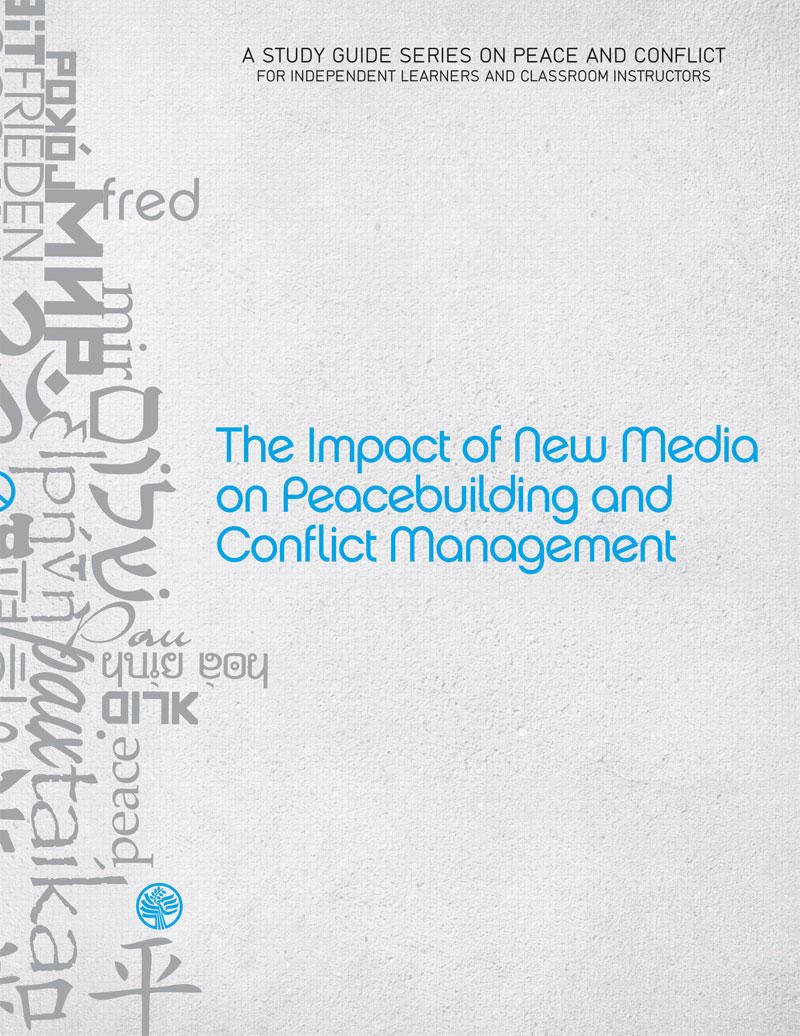New media tools such as smartphones can help hold governments accountable and coordinate relief efforts, for example, but they can also convey inaccurate information and promote violent agendas. This study guide examines both the positive and negative effects of the new media and its potential for use in peacebuilding.

This study guide series is designed to serve independent learners who want to find out more about international conflict and its resolution, as well as educators who want to introduce specifics topics in their courses. The main text of each guide briefly discusses the most important issues concerning the topic at hand, especially those issues that are related to the critical task of managing conflicts and building international peace.
Features of the study guide include:
- Main text that discusses the positive and negative effects of the new media and its potential for use in peacebuilding.
- A glossary of terms.
- Discussion questions and activities to encourage critical thinking and active learning.
- A list of readings and multimedia resources for additional investigation and learning opportunities.
The study guide can be used by teachers and students to:
- Increase understanding of the complex environment of conflict and dealing with the challenges of the new media.
- Become familiar with strategies for conflict prevention, management, and resolution.
- Develop students’ analytical reading, writing, and research skills.
- Reinforce students’ abilities to produce a work product using traditional and electronic means of research, discussion, and document preparation.
- Locate lessons, bibliographic sources, factual materials, and multimedia resources to assist students in writing essays for submission to the National Peace Essay Contest.
Download the study guide
The study guide is in PDF format. To view or print it you will need the free Adobe Acrobat reader.